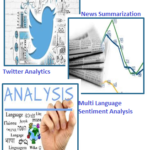Various techniques in Deep Learning are now being used to not only detect damages on automobiles but also to estimate the severity of damage and estimate the repair costs saving time and costs in the insurance survey process, when used remotely, without having the surveyor visit the location of the vehicle. At AlgoAnalytics, we have our own AI model and tool developed for automated and fast damage detection.


Traditional traffic monitoring systems usually include a setup based on inductive loops, RADARs, or LIDARs. An increase in the number of traffic video cameras, gives significant opportunity for Real-Time Analytics for these videos. Coupled with Automatic Number Plate Recognition (ANPR) system & Anomaly Detection System it can provide actionable insights which benefit a wide variety of agencies such as the traffic control department and insurance companies.

With the recent advancements in Deep Learning, new applications of unstructured data analytics are emerging in multiple domains. Image Analytics is one of the most common forms of unstructured data analytics. Exponential growth in text documents, images, videos in every domain is driving development of multiple image analytics applications to derive insights and enrich customer experience. Image analytics solutions play an important role in security and authentication purposes as well. One such exciting new application of Deep Learning is automated signature verification.

A Data Scientist today is in much demand. The kind of skill set and abilities required are not very different from what say a computer engineer would do- coding, programming, analyzing etc. However, a major winner is being ruthlessly analytical and data driven.
Learning and researching about the new Machine Learning models “out there in the market” makes the work of a Data Scientist different from the traditional software developer. One needs to understand the problems of the clients, research on which model/s to be employed, research, and design and tweak Machine Learning models.

Risk and Insurance are words that go in sync with each other- one cannot live without the other. The insurance industry has always been dependent on various factors, the most important being statistics to know their customer’s and the market demand. Machine Learning(ML) and AI has brought in a lot change in the way Insurance strategies are now being structured.
Besides predicting risks, ML and AI have now helped the Insurance industry to monitor, analyze not just their own strategies at one given time period, but keep a constant look out for changes that affect their customers, thereby keeping their policies attractive and thus halting retention.
To get that competitive edge, Insurers need to engage with Machine Learning (ML) to improve not just their business strategies but also tailor the insurance purchases to customer’s unique needs to bring in customer satisfaction.




